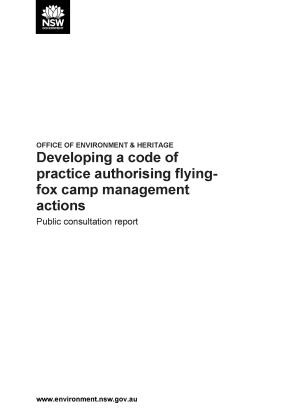Under the Biodiversity Conservation Act 2016, low to moderate risk activities can be carried out in accordance with an enforceable code of practice.
The Flying-fox Camp Management Code of Practice 2018 (PDF 233KB) has been established to define the standards required for effective and humane management of flying-fox camps. Actions to manage a flying-fox camp that are consistent with the terms of the code of practice don't need a licence.
The code of practice is accompanied by guidance notes that provide flying-fox camp managers with additional information to help when undertaking camp management actions covered by the code of practice.
Guidance notes
These notes provide guidance for flying-fox camp managers undertaking camp management actions under the Flying-fox Camp Management Code of Practice 2018 (PDF 233KB) (the Code). This page should be read in conjunction with the Flying-fox Camp Management Policy 2015.
Camp managers don't need to apply for a licence under the Biodiversity Conservation Act 2016 (the Act) for actions covered by the Code when managing flying-fox camps.
Camp managers should prepare a camp management plan in consultation with affected communities for all flying-fox camp management actions. A Flying-fox Camp Management Template (DOC 6.3MB) is available.
Some high impact and high-risk actions under the Code will require the development of a camp management plan. Under Part 2 of the Code, section 6(10)(c) states that 'a camp management plan is to specify the procedures for obtaining the endorsement of the Environment Agency Head under this Code'. Camp managers should submit their camp management plan in writing to the nearest Department of Climate Change, Energy, the Environment and Water regional office for endorsement and allow a minimum of 15 working days for the Environment Agency Head to respond.


